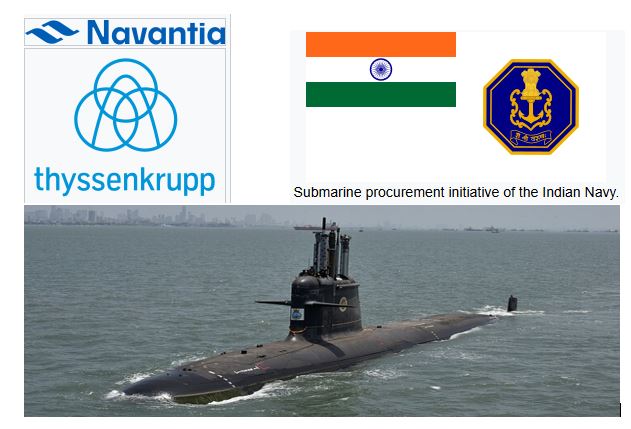India’s P-75I Submarine Contract: It is Show Time! Germany Vs Spain
India’s P-75I Submarine long term Fleet Plan is currently enjoying a tough contest between Germany & Spain. India recently hosted back-to-back visits by leaders from both countries: German Chancellor Olaf Scholz’s three-day visit, followed by Spanish Prime Minister Pedro Sanchez’s historic trip.
Amid various MOUs, agreements, and inaugurations, both countries are eagerly lobbying and putting forth their best efforts to win the P-75I submarine contract, which includes 06 diesel-electric submarines.
What is P-75I Submarine Project?
It is a long-term military plan by the Ministry of Defense (India), part of India’s 30-Year Submarine Fleet Building Plan, which includes 18 conventional and 6 nuclear submarines. India plans to deploy these submarines, equipped with modern sensors, countermeasures, air-independent propulsion, and weapons with reconnaissance capabilities, to uphold the Indian Navy’s supremacy in the Indian Ocean Region and beyond, amid an aggressive PLA Navy from China.
In the past, the project faced delays due to the withdrawal of TKMS (Thyssenkrupp Marine Systems) of Germany and Hanwha Defense of South Korea. However, recent political developments have renewed discussions about the progress of the P-75I Project. TKMS Germany is back in the contest, and Navantia of Spain is competing to win the bid.
Germany’s Bid: ThyssenKrupp Marine Systems (TKMS)
Germany’s ThyssenKrupp Marine Systems (TKMS), after initial reluctance due to a heavy order backlog and concerns about Indian procurement procedural issues, has rejoined the bidding process and showcased its AIP system during the Indian Navy’s field evaluation trials. TKMS has partnered with Mazagon Dock Shipbuilders Ltd (MDL) for the P-75I submarine project. The German government has encouraged TKMS to participate in the bidding process and, reportedly, has granted India special status concerning military sales.
India’s annoyance and dissatisfaction are still fresh following MTU (Germany)’s recent refusal to supply engines needed for the Indian made Arjun tanks. This incident significantly impacted India’s plans to export Arjun tanks to African countries. However, in a string recovery, the DRDO of India partnered with L&T to design and build the required engines for the Arjun tanks.
Spain’s Bid: Navantia
On the other hand, Spain’s Navantia has teamed up with Larsen & Toubro (L&T) to compete for the P-75I submarine project. Navantia’s AIP system, thoroughly tested and approved by the Spanish Navy, has been offered to the Indian Navy, making Navantia a strong contender.

The Spanish Prime Minister made a historic visit to India, the first in 18 years, underscoring the importance Spain places on the P-75I submarine contract and on strengthening defense ties between India and Spain.
Economic and Technological Collaboration
Both Germany and Spain are making serious efforts to leverage this opportunity to strengthen technological and defense ties with India. German Chancellor Olaf Scholz and Spanish Prime Minister Pedro Sanchez have both visited India to promote various initiatives, including lobbying for the P-75I submarine contract.

By granting India special status in military sales, Germany is working to repair the damage caused by its denial of the Arjun tank engine, which India responded to effectively by designing an indigenous engine.
Still, TKMS Germany remains a tough competitor, and it’s showtime, as Navantia of Spain will leave no stone unturned.
As India evaluates the proposals, the decision will not only boost Indian Navy’s naval capabilities but also shape its defense partnerships with these European nations. The outcome of this bidding battle will be closely watched by defense experts and policymakers in the Global South and around the world.

Great compilation 👍